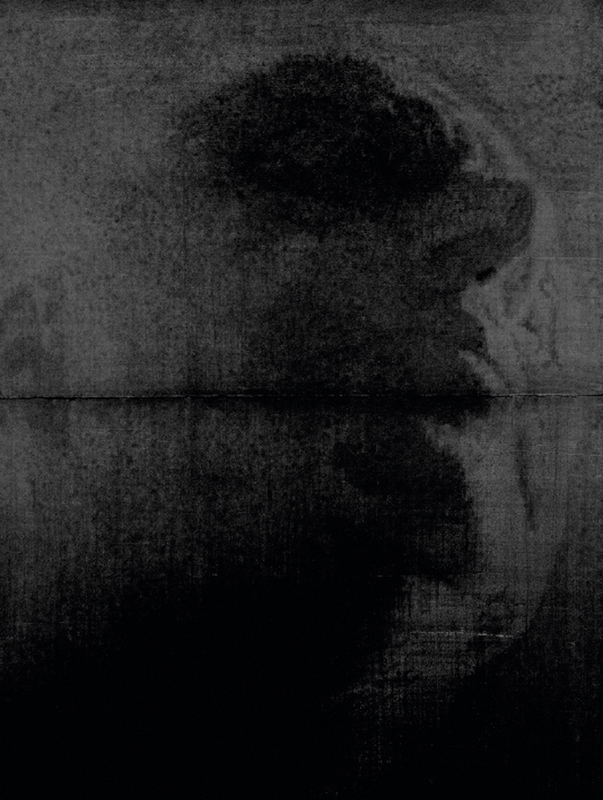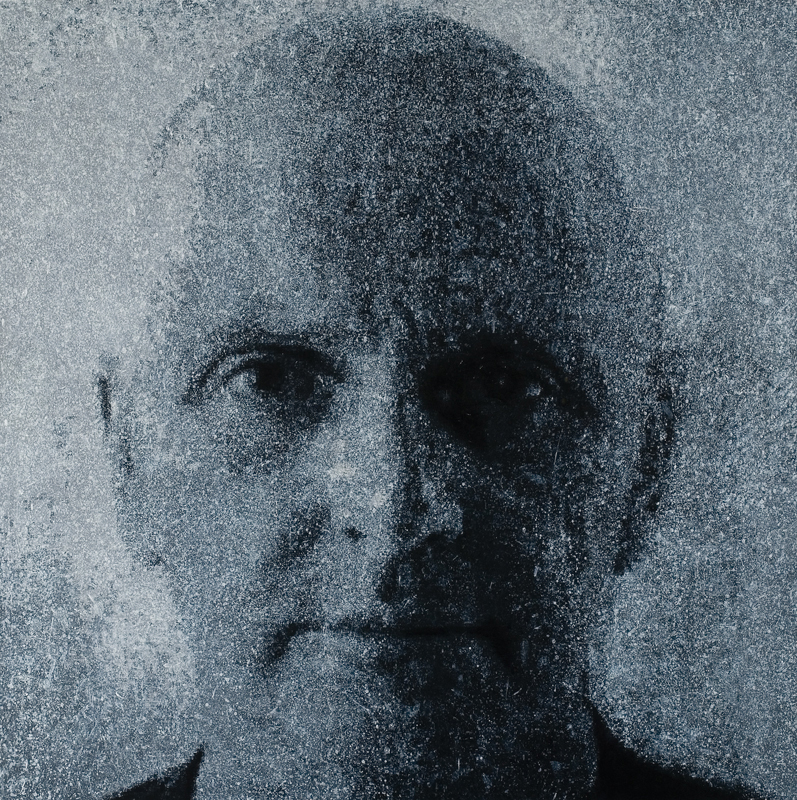SELF PORTRAITS
Abrupt angles introduce a variant on the frontal view, even to the point of suggesting, in Head-SP 4 (2001), a grotesque physiognomy comparable to the busts of the deranged by the Austrian sculptor, Messerschmidt. But this kind of exception is perhaps only there to prove the rule. There is no concern with interiority, or with mental states of any kind. The priority is not the self, but the portrait as object. - S. BANN
Head – Self-Portrait (2007) would appear to be one of the last images that presents the artist's full-face, with minimum degradation of the features, though the uniformly speckled paint surface almost functions here as a semi-transparent membrane that intervenes between the spectator and the object of attention. - S. BANN
It is in 2007, moreover, that the deliberate distancing of the subject first takes on a thematic, as well as a perceptual, cast. Beard’s Self-portrait as gargoyle could be seen as a mark of the transition, since the well remembered physiognomy of the artist has been overlaid with monstrous accretions. - S. BANN
Beard’s series of self-portraits begins in the mid-1990s. Head-SP 1, dated 1997, is in a square format, 180 x 180 cm. The medium is oil and wax on linen. The sequence unfolds particularly in the period around the millennium, and the variations progressively cover the range of painterly techniques that he had acquired, as well as running the gamut from black to white, from quite clearly accentuated features to the merest hint of a silhouette. At times, the mark of the palette knife is highly visible as the wax medium is flattened and faceted. At other times, the fine granulation of the surface suggests a powdering of pigment almost evenly distributed between the central form and its environment.
The long development of the Heads series, as it has already been traced here, must indeed have been the direct stimulus to this more recent work. As late as 2006, Beard completed two major new additions to the group: Head Self-Portrait I and Head Self-Portrait II. Both works seem to be concerned with ways of distancing the presence of the subject. In the first case, it is through a studied obliqueness of the gaze, and in the second through the inter-position of a heavy shadow that obscures the right eye, the lower side of the chin and the throat. The fact that these large paintings – 210 x 152 cm – are in mixed media on paper betokens the continual search for a technical equivalent to such an obscured or evanescent state of the image that is increasingly Beard’s concern.
In works such as Head–SP XVII, 1996, Head–SP V, 1996 and Head–SP III, 1997-8 , Beard has returned to the process of layering which now seems more like making and unmaking the im- age moment by moment. Using semi-opaque layers of paint to conceal the face just as it began to form, Beard would then scrape back to reveal a bit more, before cancelling it all out again. It was as if he was bat- tling with the very issue of process and content that is all the more conspicuous when the image is a self-portrait. This may be a good point to look again at the contemporary and historical precedent for thinking about the emergent image. Richter is an obvious starting point in relation to Beard because of his use of multiple image sources, including photos and media images. His layering techniques in abstract paintings are also akin to Beard’s painting. Richter often creates a fairly elaborate field but will then drag a squeegee loaded with one colour of paint over the dry surface so that glimpses of the under layer can still be seen. This layering of the surface intimates space without creating its illu- sion. In this respect it is not so different from the use of layering in Beard’s painting. Richter’s treatment of figuration as equivalent to abstraction is similar to the balance Beard is seeking in these portraits. - A. BOND







